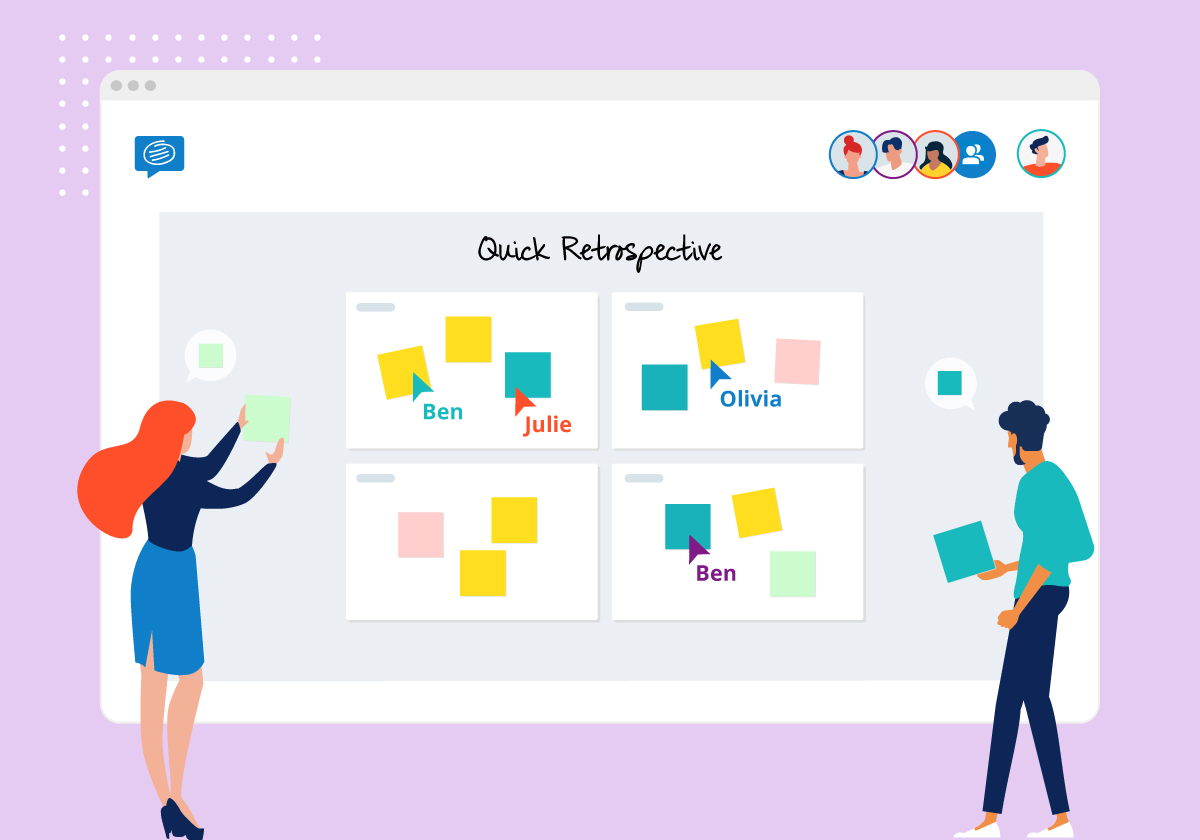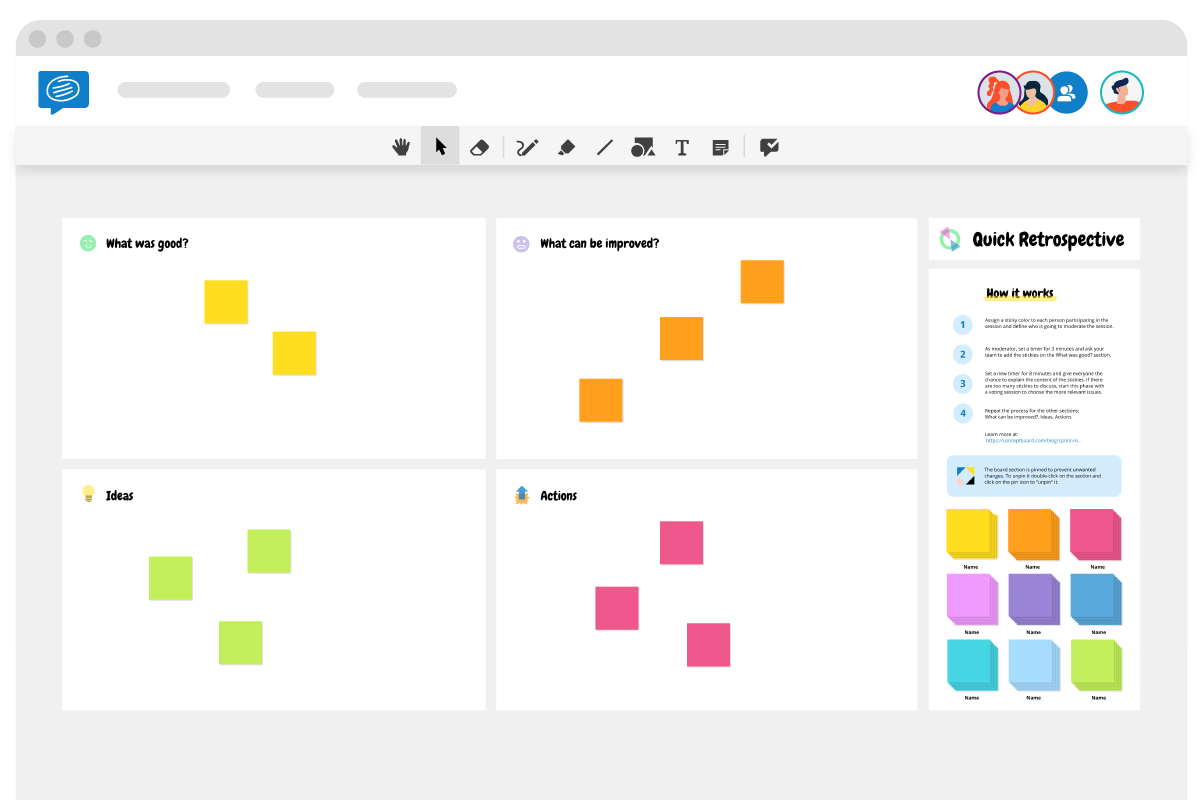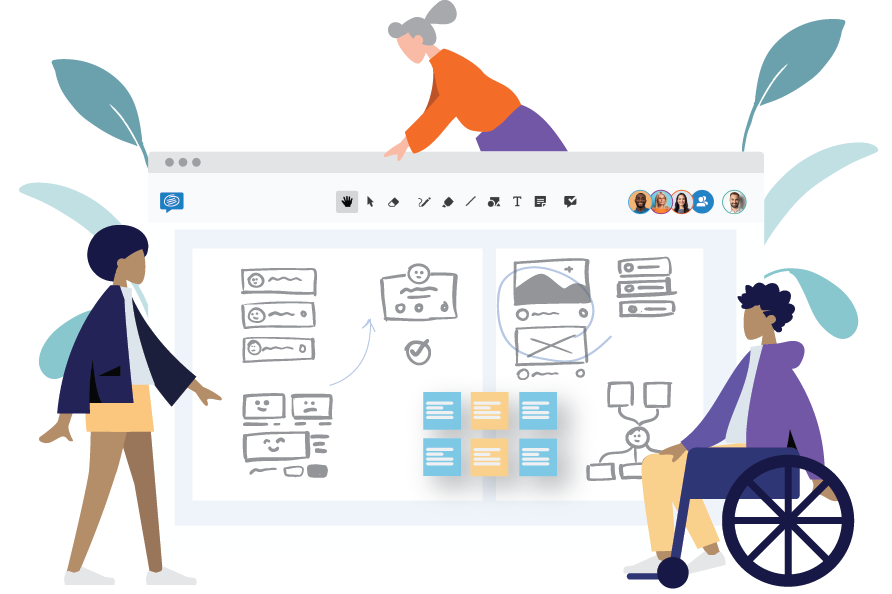This post is also available in: German
A template for better sprint retrospectives
Sprint retrospectives are run after a sprint has been completed and before the next sprint planning meet. The objective of the retrospective is to review the last sprint, identify what went well as opportunities for improvement. Depending on the sprint length, these retrospectives are typically run every 2 to 4 weeks.
A sprint retrospective template is used by teams to automate the process of running retrospectives. All you have to do is load the template, share the board with the team, and you’re all set. Our quick retrospective template is tailor-made for teams short on time while capturing actionable feedback to drive process improvements.
Let’s have a look at how it works.
Quick sprint retrospective template
Our retrospective template is divided into 4 sections and is perfect for regular sprint retrospectives. Each of these sections capture feedback for various aspects of the last sprint. Once the template has been loaded, feedback can be captured on digital sticky notes. Thanks to Conceptboard’s powerful cloud-based functionality, all content is saved automatically! The template can also be downloaded as a high-res PDF.
Sections of the quick retrospective template
The 4 sections of the quick retrospective template include the following:
- What was good – Highlight everything about the last sprint that contributed to the success of the sprint. Helpful colleagues, a clear product roadmap, good collaboration, each of these could be added to this section. Don’t shy away from showing appreciation!
- What was bad – Again quite straightforward. Surface anything you felt held the team back from performing at optimum levels. You should be careful however to not let your emotions color your feedback. Stick to the facts and avoid judgement.
- Ideas – This section focuses only on ideas that will positively impact future sprints. The use of new tools, process improvements, better communication can all be a part of this section. Identify opportunities and drive success!
- Actions – No sprint is complete without creating action points. This section can used to identify the actionable and dividing responsibilities. Typically, these tasks should be completed before the next sprint planning session.
Advantages of the template
The biggest benefit of the template is teams do not have to start from scratch. Since the board is saved automatically, it can also be revisited at a later date. Additionally, this template can be wrapped up in 45 minutes or less.
The collaborative nature of an online whiteboard also ensures distributed teams can participate like they were present in the same room. Features such as live cursors make the sessions even more engaging!
If you liked using this template, we’ve created a bunch of additional retrospective techniques and ideas, we are sure will add some variety and fun to your retrospective sessions. These include the starfish retrospective, the Start, Stop, Continue retrospective and the sailboat retrospective, just to name a few!






1 Comment. Leave new
Need the template to understand what went right and what went wrong, what we need to correct.